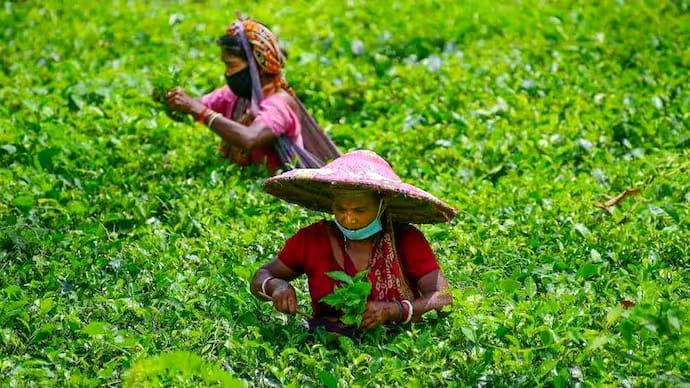‘Advantage Assam 2.0’ marked a transformative chapter in the journey of Assam. For over two days in February 2025, Guwahati witnessed the confluence of distinguished ministers of state, key global investors, policymakers, and industry leaders. An initiative of the government of Assam, this second edition of the investors’ summit aimed to underscore the role of Northeast India, particularly Assam, in shaping the country’s economic progress and establishing itself as an important investment hub.
An enchanting prelude to this grand summit was the ‘Jhumoir Binandini,’ a cultural extravaganza commemorating 200 years of Assam’s tea industry. Of particular interest was the troupe of over 8000 performers belonging to the tea tribes of Assam who welcomed Prime Minister Narendra Modi and delegates from over 60 countries through their traditional folk dance, the Jhumoir. The representation of the tea tribes of Assam was significant, given their long history outside the limelight in the peripheries. Inaugurating the event, PM Modi established his affinity with the tea community of Assam, remarking, “Who will understand the smell and quality of tea better than a chaiwallah?”
The tea tribes of Assam comprise around 2 million people and make up to 20% of the population of Assam. Despite their crucial contribution to the Indian economy, as is evident by the success of the Assam tea industry in the global arena, the tea plantation community remains one of the state’s poorest and most marginalized groups. While their colonial history was obscured by slavery and exploitation, efforts to improve their status post-India’s independence have not shown any significant improvements either. For instance, the Plantation Labour Act of 1991 sought to regulate the working conditions and promote the welfare of the tea plantation workers. However, minimal progress and upliftment of their socio-economic condition occurred (Das, 2015). Their continual isolation as a community on the grounds of language, cultural, and economic barriers further reinforced their isolation from mainstream communities. Key areas affected include access to healthcare facilities, poor living conditions, deprivation of education, and unregulated work conditions, to name a few (Das, 2015; Nath & Kumar, 2024).
However, the narrative has been changing in the present times. To tackle the lack of proper education among the tea planting communities, a proposal was put forward by the Government of Assam to establish schools that are equipped with modern infrastructure and can render quality education. Out of the 200 tea garden model schools proposed, the foundation for 119 was laid in November 2022 at the cost of Rs. 142.50 crore. As of 2023, 116 such model schools were functioning for children of tea plantation workers (PTI, 2022). Speaking at Assam Advantage 2.0, PM Modi reiterated the Centre’s focus on education and extended overwhelming support for the construction of 100 more schools that are currently in the pipeline.
Yet another area of significant focus has been healthcare. In addition to the physical demands of their work, the tea tribes of Assam have also consistently faced challenges in terms of access to quality healthcare, primarily due to their remote locations on tea estates and the lack of healthcare infrastructure in such areas. To tackle the challenge in the healthcare arena, the Assam government has been working towards opening 350 Ayushman Arogya Mandirs, or hospitals, in the tea tribe areas. Around 1.5 lakh pregnant women in tea gardens also receive financial help of Rs. 15,000/- to support their medical expenses (Sentinel Digital Desk, 2024).
In addition to education and healthcare, PM Modi highlighted the state government’s policy of reserving 3% of seats in state government jobs for youth belonging to the tea tribes. Economic upliftment in the form of better wages has also been a major goal, with women being the primary targets of these developments.
The changing narrative around the tea tribes of Assam, supported by evidence of concrete actions taken by the Centre and the state government towards the upliftment of the once marginalized people group, is important because it reflects the direction in which India is headed.
The representation of Assam’s tea tribes at the outset of Advantage Assam 2.0 points to a crucial balance in the vision of a Viksit Bharat. It is a vision of progress marked by the attainment of economic feats while also uplifting the marginalized communities. It is a vision of development that reaches every corner of society, ensuring the inclusion of every Indian in the narrative of national advancement, growth, and progress.
The views and opinions expressed here belong solely to the author and do not reflect the views of BlueKraft Digital Foundation.







